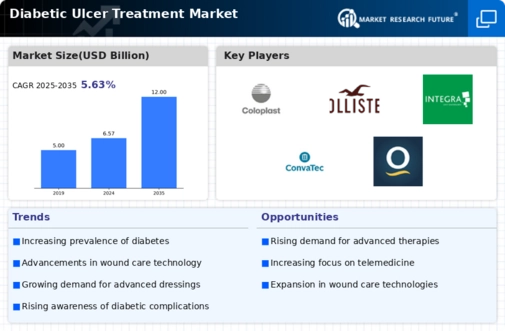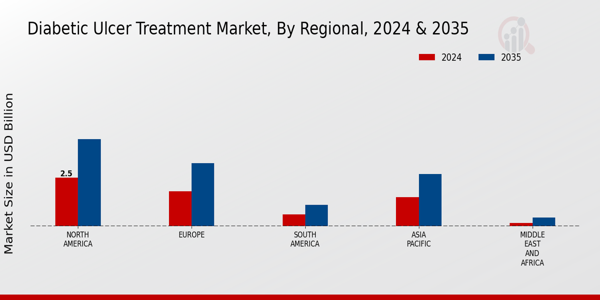The Diabetic Ulcer Treatment Market is growing quickly because more and more people throughout the globe have diabetes. As more people learn to live with this long-term illness, the number of diabetic foot ulcers has also gone up. This shows how important it is to find appropriate treatment alternatives. The development of new wound care technologies, such as bioengineered skin replacements and enhanced dressings, is one of the main factors driving the market. These technologies help wounds heal quicker and lower the risk of infections.
Also, as more and more doctors and patients learn about how to treat diabetic ulcers, there is an increasing need for new treatments.
The growth of telemedicine and digital health platforms, which let diabetes patients be monitored and consulted from a distance, has opened up new opportunities in the global market. This accessibility makes it easier to get help when you need it and makes it more likely that people will stick to their treatment regimens. Also, a growing emphasis on preventive treatment via education and frequent screening for problems in people with diabetes opens up new markets. Recent trends show that tailored medication is becoming more common in the treatment of diabetic ulcers.
Clinicians are more likely to customize therapies to fit the requirements of each patient, which leads to better healing results.
Adding artificial intelligence to treatment plans is becoming more popular, which helps healthcare professionals provide better care to their patients. Also, sustainability in product creation is becoming more and more crucial as the industry reacts to rising environmental concerns by using eco-friendly materials and methods. As the world changes, these tendencies all point to a bright future for the market for diabetic ulcer therapy.
The increasing prevalence of diabetes worldwide is likely to drive the demand for advanced diabetic ulcer treatment options, as healthcare systems strive to improve patient outcomes and reduce complications associated with chronic wounds.
Centers for Disease Control and Prevention (CDC)










Leave a Comment